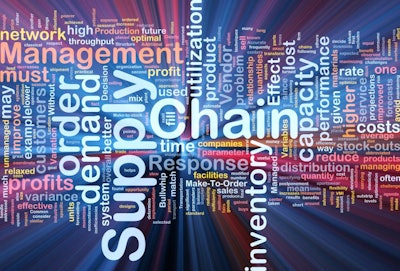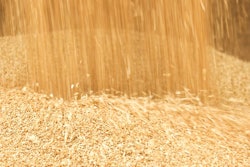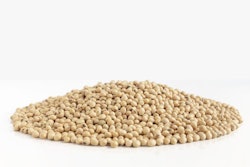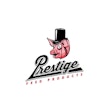
New CoBank report says high energy prices, a rising dollar and steepening yield curve are challenging the ag sector
Most industries in the U.S., including agriculture, are struggling with “perhaps the worst supply chain bottlenecks to date,” according to the recent quarterly report from CoBank.
Lead times for manufacturing inputs are at or near record highs, and retailers are spending millions to secure shipping container vessels, all of which is driving up costs, the report said. While many businesses have resisted raising prices, more are expected to do so in the last quarter of 2021 or the first quarter of 2022. Supply chain woes and inflation are expected to continue well into 2022.
Agriculture is facing challenges resulting from a combination of higher energy prices, a rising dollar and steepening yield curve.
“For those in agriculture, this confluence of factors poses a headwind and creates even higher operating costs to close out the calendar year,” the report said.
Corn, soybean and wheat prices have declined from their third-quarter highs, but CoBank says the next major catalysts for grains are fall harvest, Gulf port activities and China grain purchases.
“The export picture remains cloudy in the short term as grain terminal operations in the U.S. Gulf are just beginning to open after Hurricane Ida, and export volumes remain depressed. That said, the current corn and soybean crop marketing years have just begun, thus it is too early to sound the alarm on U.S. exports to China for 2021-22,” the report said.
Animal protein, dairy industry challenges
Supply chain issues are also challenging the animal protein industries. Labor shortages are contributing to processing slowdowns while foodservice and retail outlets are seeing increased demand. Notably, CoBank said, broiler year-to-date weekly processing is down about 1% from a year ago. Chicken production is expected to moderate due to hatchability issues, labor availability and elevated feed costs.
Staffing shortages are also a challenge in the beef sector, but “packers continue to chip away at the remaining backlog of fed cattle.” In the pork sector, a lack of market-ready hogs, tighter production schedules and high meat demand has led to May ending stocks at 75% of the five-year average.
Meanwhile, U.S. exports of chicken, pork and beef combined are forecast to hit records, up 3% year over year.
The U.S. dairy sector has stopped its nearly yearlong expansion due to rising feed and construction costs, and extreme summer heat lowered milk productivity. The size of the U.S. cow herd fell by 29,000 over three consecutive months this summer.
“Volatile milk prices, rising feed and construction costs, and lofty beef prices have caused producers to put expansions on hold and instead evaluate culling herds or exiting,” the report said. “Labor tightness also has dairy farmers analyzing purchases or leases of robotic milkers, which have become more cost-effective in the face of rising labor costs.”
CoBank said the U.S. fuel ethanol sector saw mixed performance in the past quarter but operating margins increased dramatically as corn input costs fell.
“Higher ethanol prices, lower corn input costs, and efficiency gains more than offset the rise in natural gas prices and contributed to the increase,” the report said.
Phase one deal with China nears end
With the U.S.-China phase one trade agreement closing out at the end of this year, two of the three product categories included in the deal – manufactured goods and energy – are falling well short of commitments, but agricultural exports were at 85% of target.
“If soybean exports are strong before year end, China could actually meet its 2021 agriculture obligations, if not its combined two-year commitment,” the report said. However, “the looming uncertainty for U.S. agriculture exports to China is now 2022. Without purchasing commitments and with Chinese tariffs still in place on most U.S. ag goods, U.S. agriculture will soon find out whether China intends to keep buying at the recent torrid pace.”















